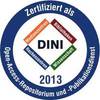PDF, English
 Restricted access: Repository staff only until 28 February 2026. Restricted access: Repository staff only until 28 February 2026.
Login+Download (10MB) | Terms of use |
Abstract
Pediatric brain tumors are the leading cause of cancer-related mortality in children, with medulloblastomas being the most prevalent embryonal type. Among its four molecular subgroups, Group 4 is the most common yet least understood. Standard treatments (surgery, chemotherapy, radiotherapy) improve survival but cause severe side effects, including immunosuppression and neurocognitive decline. Current genetically modified mouse models fail to recapitulate the observed heterogeneity of Group 4 tumors, and attempts to generate accurate models using known driver oncogenes, such as PRDM6 and MYCN, have been unsuccessful. This may be due to our limited understanding of the tumor’s origin within the unipolar brush cell (UBC) lineage, particularly the critical time window in which these oncogenes exert their effects. Despite their identification nearly 50 years ago, UBCs remain poorly characterized, with most studies limited to electrophysiology and a handful of molecular analyses. To address this gap, I combined immunofluorescence-based imaging with transcriptomic datasets, including my own single-cell RNA sequencing (scRNA-seq), to refine UBC lineage definitions and their relevance to Group 4 tumor modeling. Pseudo-age-matched comparisons between human and mouse cerebella revealed species-specific differences, including earlier UBC progenitor emergence in human fetal development and a higher proportion of early differentiating UBCs. Using an UBC reporter mouse, I enriched and isolated GFP-positive cells from E16.5 and P0 cerebella, confirming all UBC cell states and uncovering unexpected heterogeneity, with some UBCs lacking Lmx1a expression. This finding challenges the assumption that all UBCs follow a uniform lineage and suggests instead an additional lineage diversity within this population. To validate these results, I optimized multiplexed Immuno-SABER staining, evolving from single/double stainings to simultaneous visualization of up to 13 proteins in developing mouse and human cerebella. This enabled a refined molecular characterization of the rhombic lip (RL), revealing three distinct compartments: (1) early progenitors in the ventricular zone (RL VZ), (2) fate-determined granule cell (GC)/UBC progenitors in the subventricular zone (RL SVZ), and (3) proliferative progenitors, potentially of the GC lineage, in the exterior rhombic lip (eRL). Temporal analyses showed that UBC progenitors appeared in the RL from E16.5 onward but were absent along migratory pathways, where only differentiating UBCs were detected. Mature UBCs first emerged at P7 and became more abundant by P28, with a surprising degree of protein expression heterogeneity, including populations lacking TBR2, the presumed universal UBC marker. To further investigate lineage commitment, I applied Immuno-SABER to genetically modified mouse models and human tissue. Lineage tracing of Lmx1a-expressing progenitors confirmed their contribution to UBC development, though LMX1A was not consistently expressed in all UBCs. Functional ablation of TBR2 in Lmx1a+ progenitors disrupted UBC maturation, preventing proper migration and differentiation, with no mature UBCs detected at P28. However, TBR2+ GCs, particularly in the inner external granular layer (EGL), remained unaffected, suggesting distinct TBR2 dependencies within cerebellar lineages. In human fetal cerebellar tissue, TBR2+ developing UBCs exhibited expected protein expression patterns predicted by transcriptomic analyses. However, murine UBCs lacked the anticipated co-expression of ATOH1 and LMX1A with TBR2, highlighting species-specific transcriptional and translational discrepancies. In patient-derived xenograft (PDX) models, TBR2 was detected in Group 3 tumors but absent in mixed Group 3/4 tumors, raising questions about how TBR2 expression is regulated during tumor development. In summary, my work integrates transcriptomic and high-content imaging analyses to refine cerebellar lineage definitions to improve preclinical modeling of Group 4 medulloblastomas in the future. UBC heterogeneity, species-specific differences, and unexpected marker variability suggest that additional UBC subtypes may exist beyond the traditionally recognized two. Future studies should investigate the roles of TBR2 and LMX1A in UBC lineage specification and tumor heterogeneity, as these factors may be key to unraveling Group 4 medulloblastoma biology and improving disease modeling.
| Document type: | Dissertation |
|---|---|
| Supervisor: | Angel, Prof. Dr. Peter |
| Place of Publication: | Heidelberg |
| Date of thesis defense: | 23 May 2025 |
| Date Deposited: | 28 May 2025 08:31 |
| Date: | 2026 |
| Faculties / Institutes: | The Faculty of Bio Sciences > Dean's Office of the Faculty of Bio Sciences |
| DDC-classification: | 500 Natural sciences and mathematics 570 Life sciences |
| Uncontrolled Keywords: | Neurowissenschaften Kleinhirn/Cerebellum Charakterisierung Neuron |









